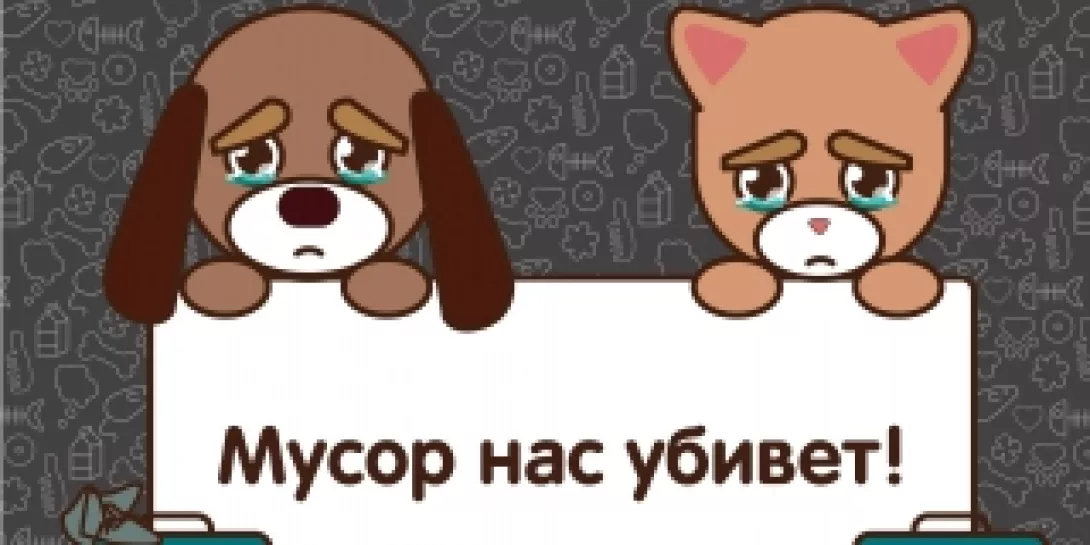
.
A few weeks ago, we found out that in December in Paris the Climate conference of the UN will take place. The goal is to sign a new international agreement that will replace the Kyoto Protocol. You can read more here: http://www.ambafrance-ua.org/21-a-miizhnarodna-konferenciiya-z
On the November 29, Ukrainians together with other peace activists will take to the streets of their cities to demand from politicians more decisive actions to save the planet.
We are well acquainted with this topic because throughout the existence of the Fund every day we had to deal with the detrimental human impact on our ecosystem; and stray animals are suffering from this too.
The problem is really simple and shameful as for the 21st century – the majority of people just don’t know how to clean up after themselves and their pets.
Recklessly abandoned wrappers, bottles or packages are a real threat to the life of homeless animals. It so happened that Ukrainians don’t treat seriously to household garbage. The majority believes that in comparison with the exhaust gases and waste production, the garbage is nothing. But think about it, if all 43 millions of people would think like that and to neglect the order in public places? A pile of hazardous waste, which spreads the infection, multiplies harmful bacteria, and kills animals – is our near future?!
Let's look at the example, have you ever thought that the usual membrane from a sausages or a piece of sausage with a metal clamp dropped past the trashcan can cause obstruction of the gastrointestinal tract, or poisoning by salts of metals? This complicated terminology is in fact a terrible painful death of a four-legged friend.
About 3 years ago people in Ukraine began to sort waste. Since then, houses have containers for the distribution of garbage on the one that is subject to recycling and the one that is hazardous, requiring special disposal.
The rules are simple:
1. Plastic bottles are to be flattened and discarded in special nets or containers!
2. Glass – to green containers labelled "Glass"!
3. Paper – to the containers labelled "Paper"!
4. Construction waste and overall garbage must not be thrown away into ordinary containers, but discarded into specialized large containers located within your neighbourhood!
5. Organic waste (food residues, etc.) should be thrown away into ordinary containers, as they are easily discomposed and are not harmful to the surrounding area.
6. Throwing away household hazardous waste in bins is forbidden (old batteries, thermometers, small electronic devices, expired medicines, fluorescent lamps, etc.). They require special disposal.
And what do we have instead? Usually it’s one overflown container, the one that is closer to home. And really, what's the difference where to throw? But imagine the diversity of substances (detergents, batteries, solvents) are not isolated from each other, they come together in a deadly chemical reaction and become a powerful poison for the whole the environment. And for fluffy street cat the first and the only desire is to taste something interesting, and it can be lethal for the cat.
In fact, each person is important in solving this problem, every worthy deed, every conscious choice.
We understand that it's just one component that affects the climate situation, but it can be solved. We need to change the system, not the climate!
We appeal to all dog lovers, cat owners and those who want to live in harmony with nature to participate with us in the Climate march.
Finally we’ll share our favourite aphorism of Arctic explorer Robert Swan, who said: "The greatest threat to our planet is the belief that someone else will save it".